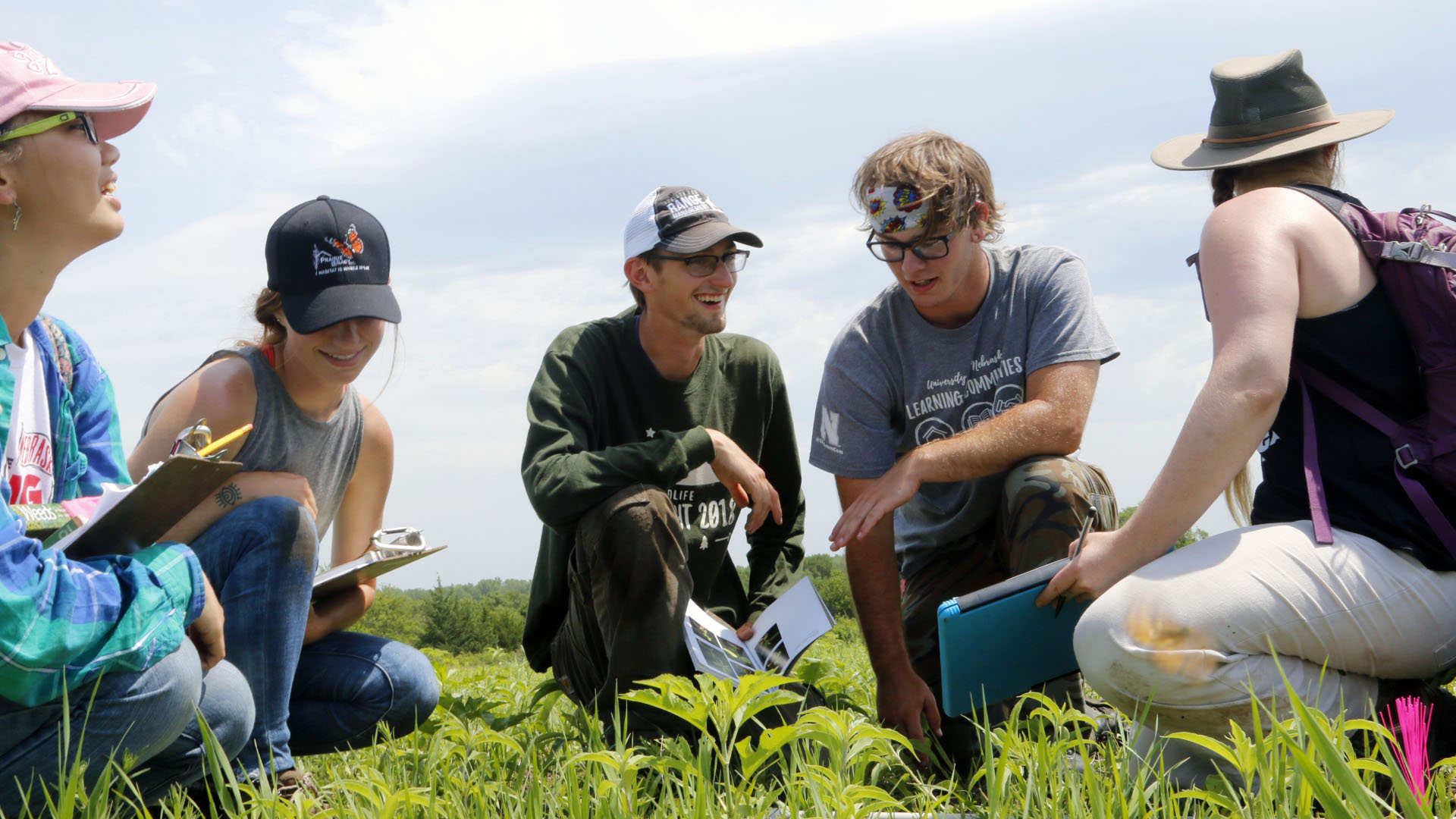
Stand at the top of the last hill at Pioneers Park in Lincoln, look south, and see bison and elk roaming the fenced-in tallgrass prairie there. But look even further into the horizon and find the Prairie Corridor on Haines Branch, a tallgrass prairie passageway that eventually will connect south Lincoln to the Spring Creek Audubon Center at Denton.
The vision for the project is to restore 7,800 acres of prairie along the Haines Branch of Salt Creek and build in trails and exploration hot spots such as the Conestoga Lake, Denton Prairie and Bobcat Prairie.
It is at Bobcat where six University of Nebraska-Lincoln students spent their summer gaining a greater understanding of the best ways to implement prairie restorations for long-term ecological diversity. The prairie sits 16 miles south of Lincoln, a 297-acre plot of cascading pasture and trees in various stages of restoration, 25 of which are dedicated to research projects by the School of Natural Resources. Dave Wedin, ecosystem and prairie ecologist at the school, and Katharine Hogan, applied ecology doctorate student with the National Research Traineeship program at SNR, led those studies on 24 plots, divided into randomly assigned experimental and control spaces.
The goal was to compare the two established methods of prairie restoration plantings and management: grassland conservation program, used by the Conservation Reserve Program, and high-diversity local ecotype restorations, used elsewhere along the corridor.
"We are studying the success of these two methods for adding native species to existing low-diversity grassland,” Wedin said. “One of our goals is to see where efficiencies in time and money can be gained in this type of restoration.”
While both approaches contribute to grassland conservation in the Nebraska landscape, he said, the researchers want to know whether differences in land preparation, planting, and diversity of seed mix make a long-term difference for restoration success. make a long-term difference for restoration success. Of particular concern are native pollinators, which are a priority for the Prairie Corridor.
In May, the plots were planted, and under a beating late-June sun, the students counted and documented the diversity of seedlings that had come up, fully knowing next year and the year after and the year after the counts will need to be repeated. Establishing tallgrass prairies take time, Wedin said, and what it looks like today will shift over time. But the benefits will be countless.
While all students participated in the prairie planting experiment, they each also had a project of their own, funded by Nebraska Environmental Trust; Cabela’s Apprenticeship; or UCARE funds. Through the semester, we’ll highlight those individual projects, including:
- “Bird communities in the Prairie Corridor,” by Grace Schuster, a junior fisheries and wildlife student;
- “Prairie Corridor plants,” by Elizabeth Park, a junior environmental studies student;
- “Assessment of insect communities among different prairie habitats” by Hunter Brophy, a sophomore insect science student;
- “Spatial and temporal variation in nutrient chemistry in the Haines Branch,” by Phuong Minh Tu Le, an environmental restoration science student; and
- “Platte Basin Timelapse: Prairie Corridor,” by Ethan Freese, an applied science graduate student. (View an early time-lapse video of the project here.)
The Prairie Corridor project is a joint effort among more than 30 organizations and individuals, including the University of Nebraska-Lincoln; Lincoln Parks and Recreation; Lincoln Parks Foundation; Spring Creek Prairie Audubon Center; Great Plains Network; Lancaster County; Lower Platte South Natural Resources District and Nebraska Game and Parks Commission. Learn about the project partners here. Learn more about the project's history here.
What to see more photos from their summer excursions? Visit our Facebook.
Shawna Richter-Ryerson, Natural Resources